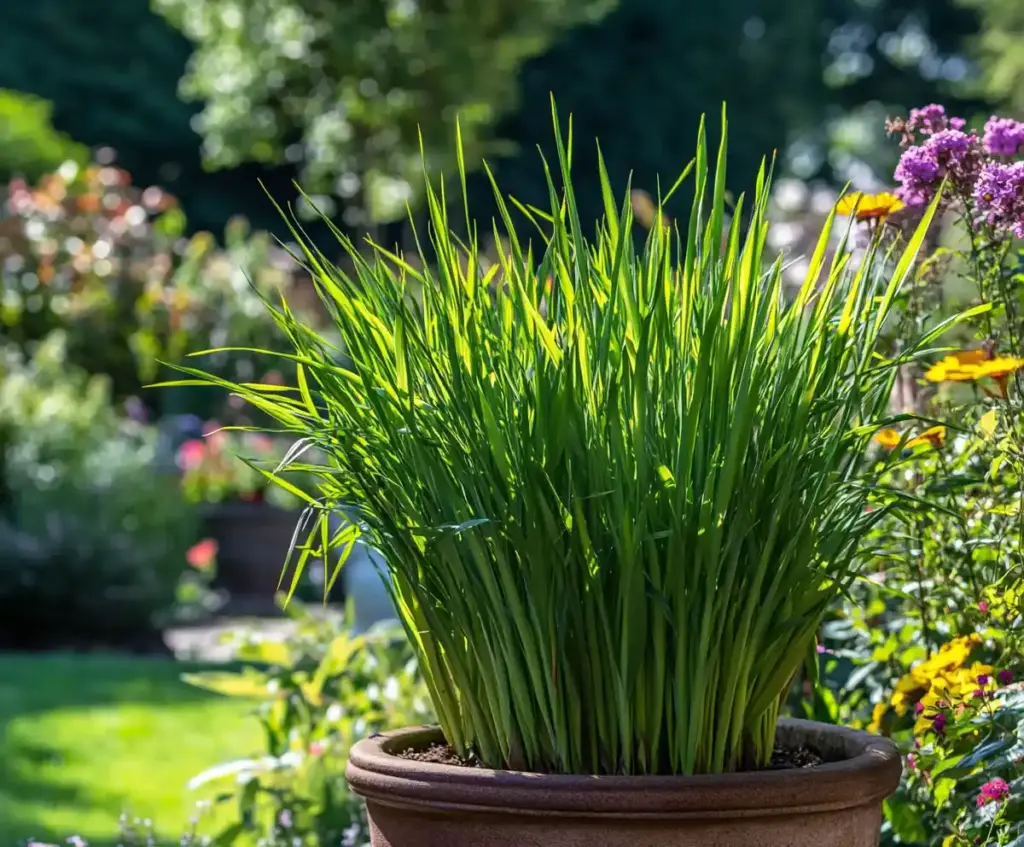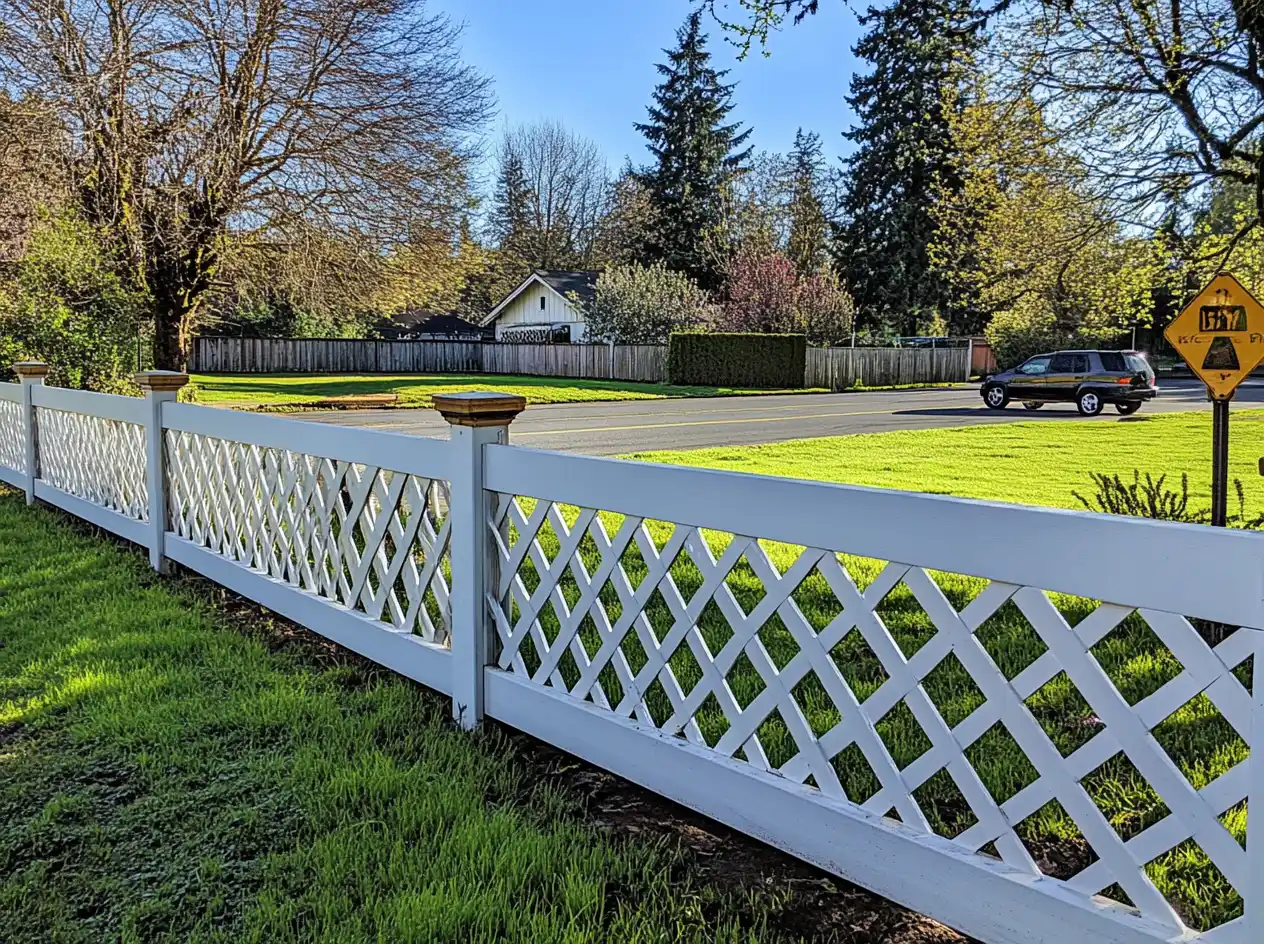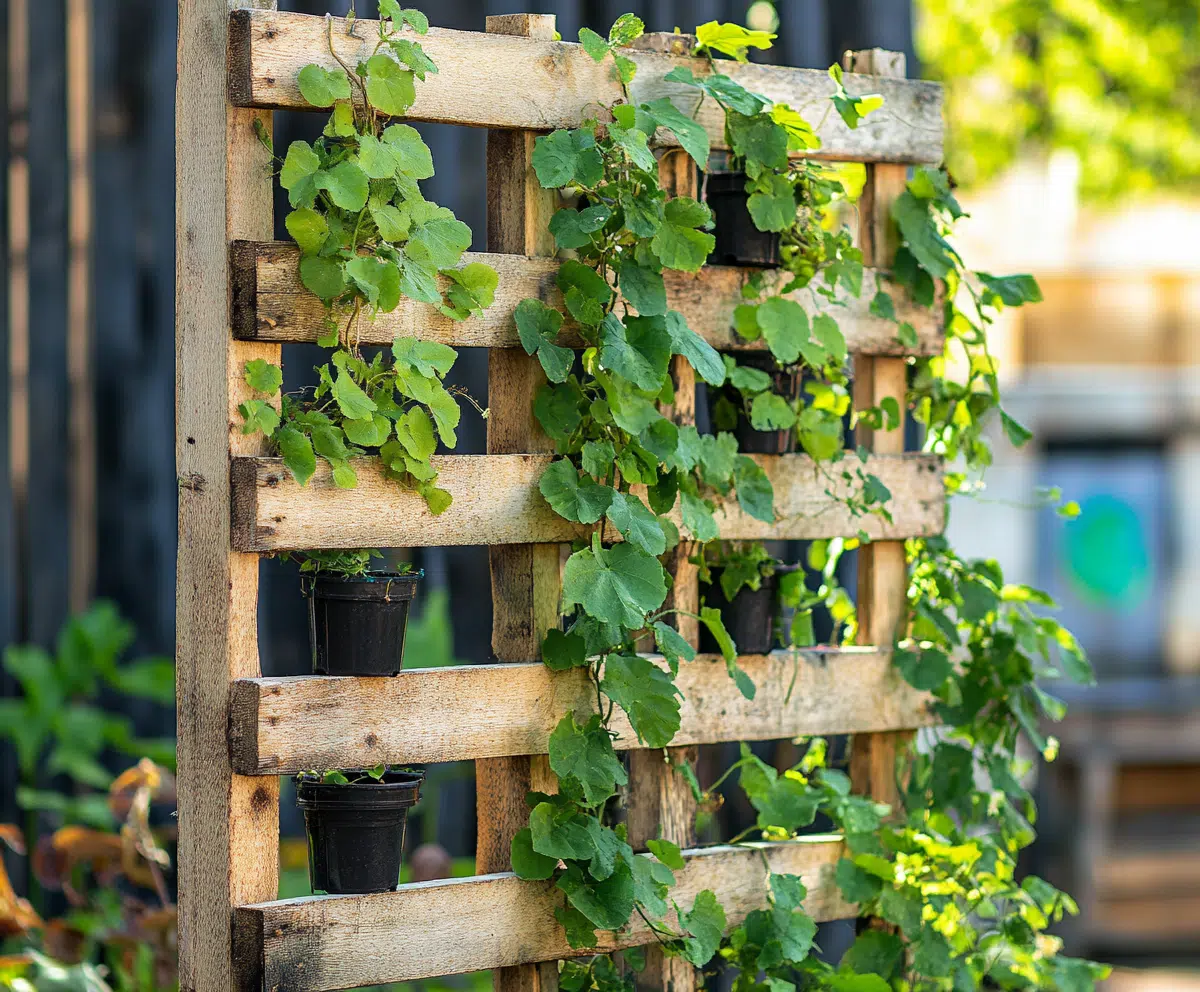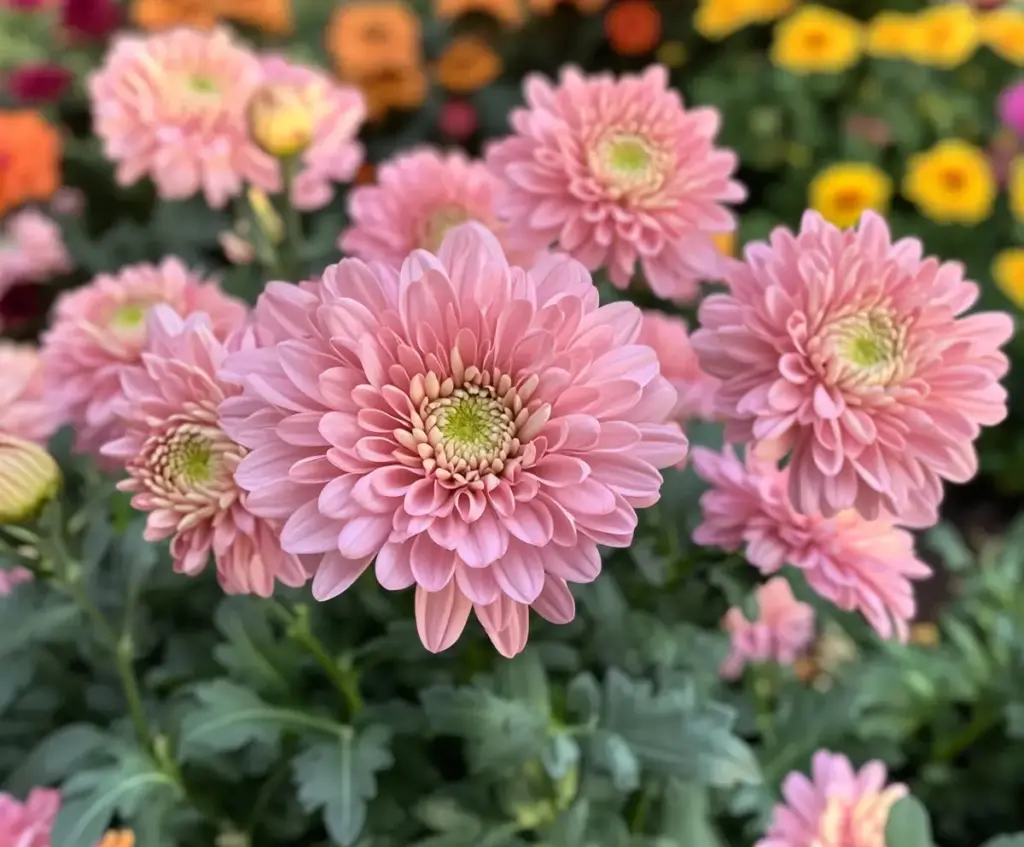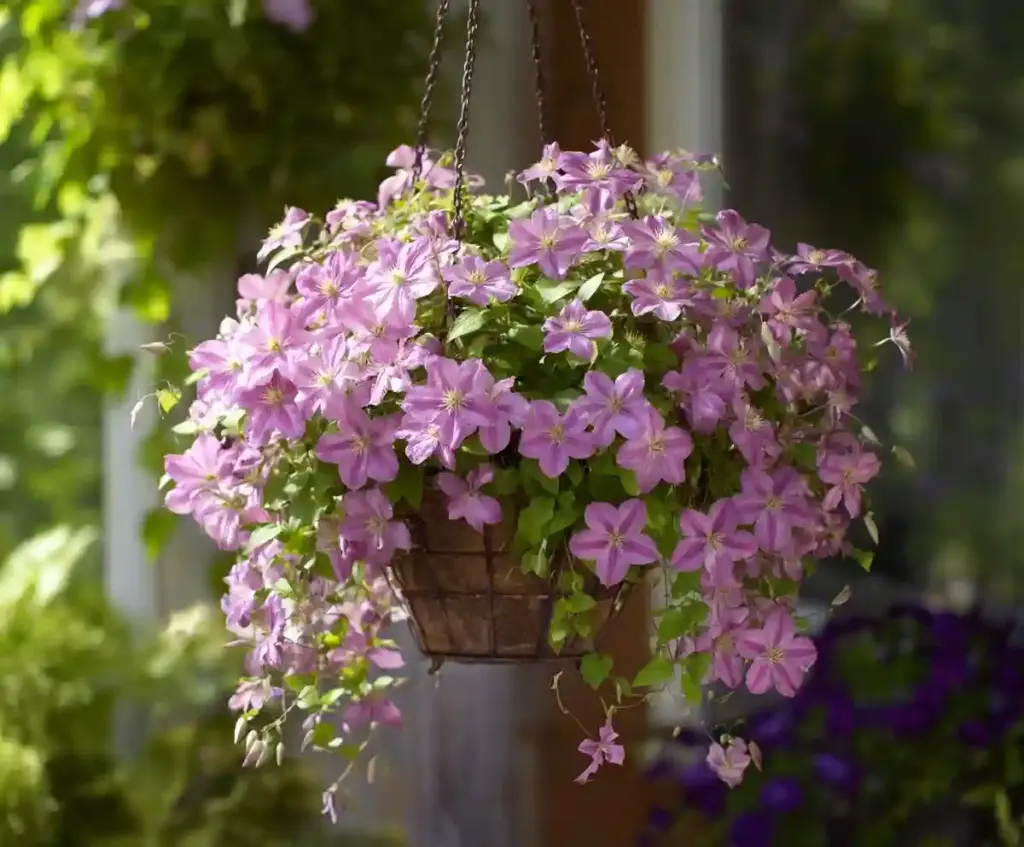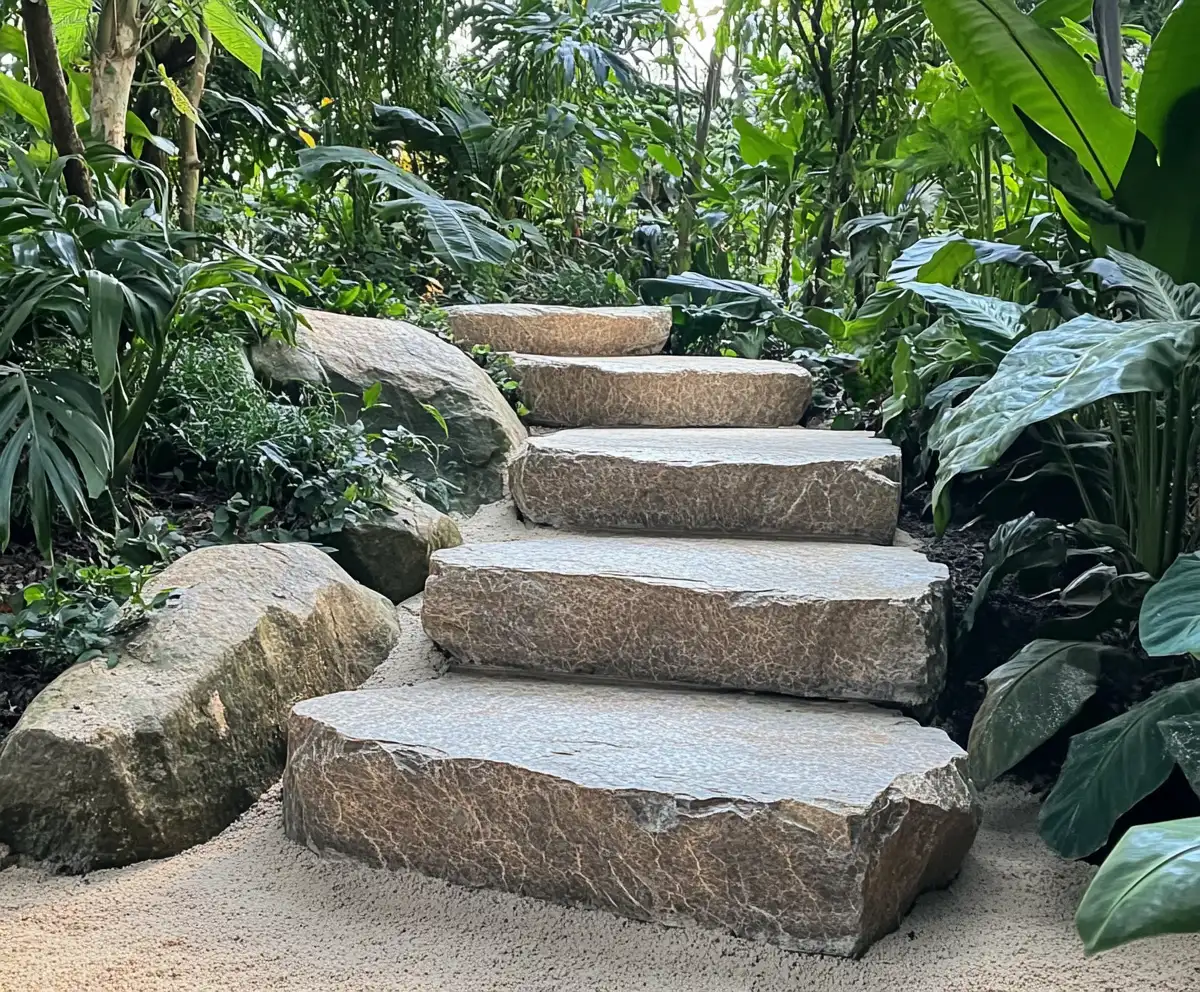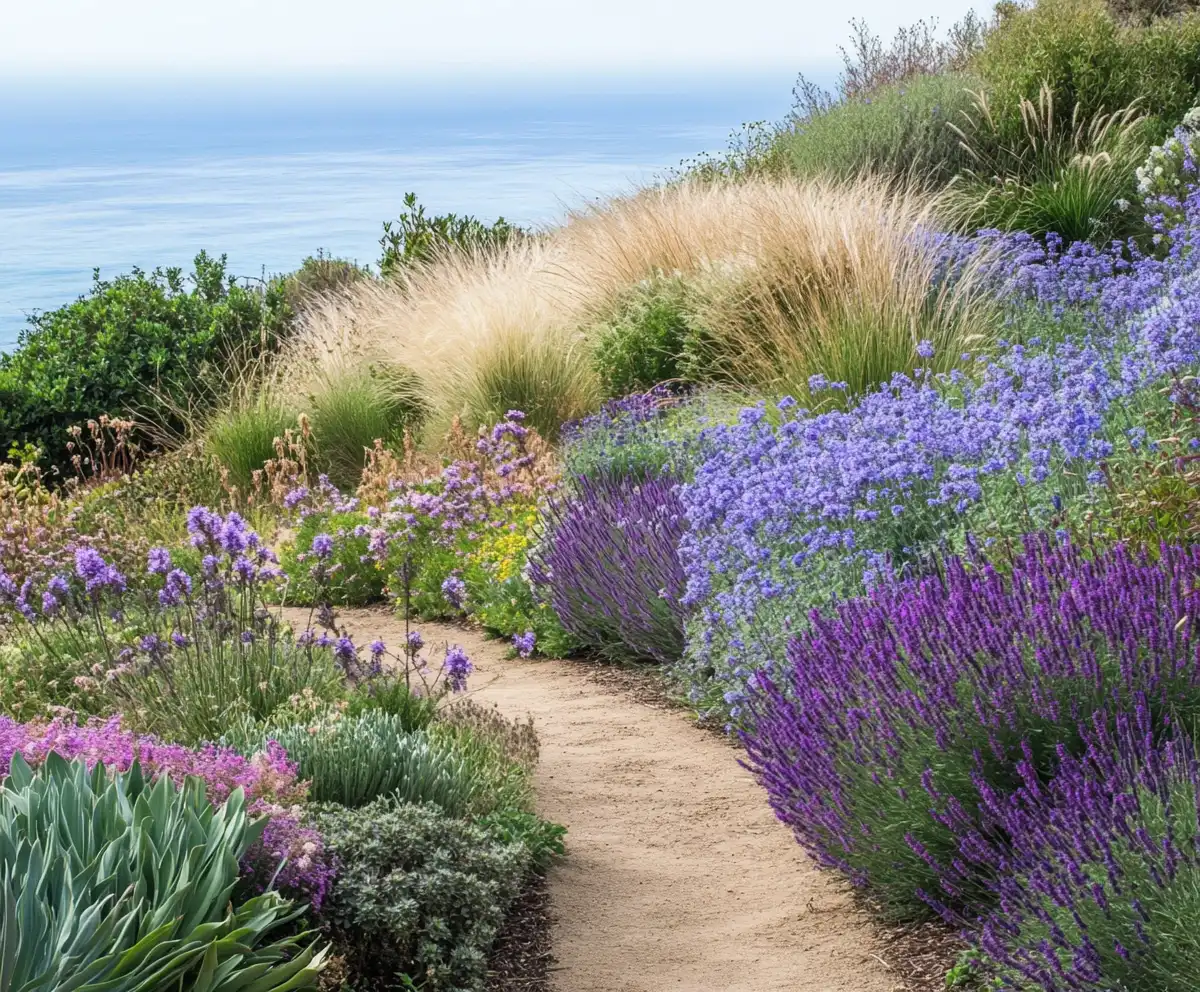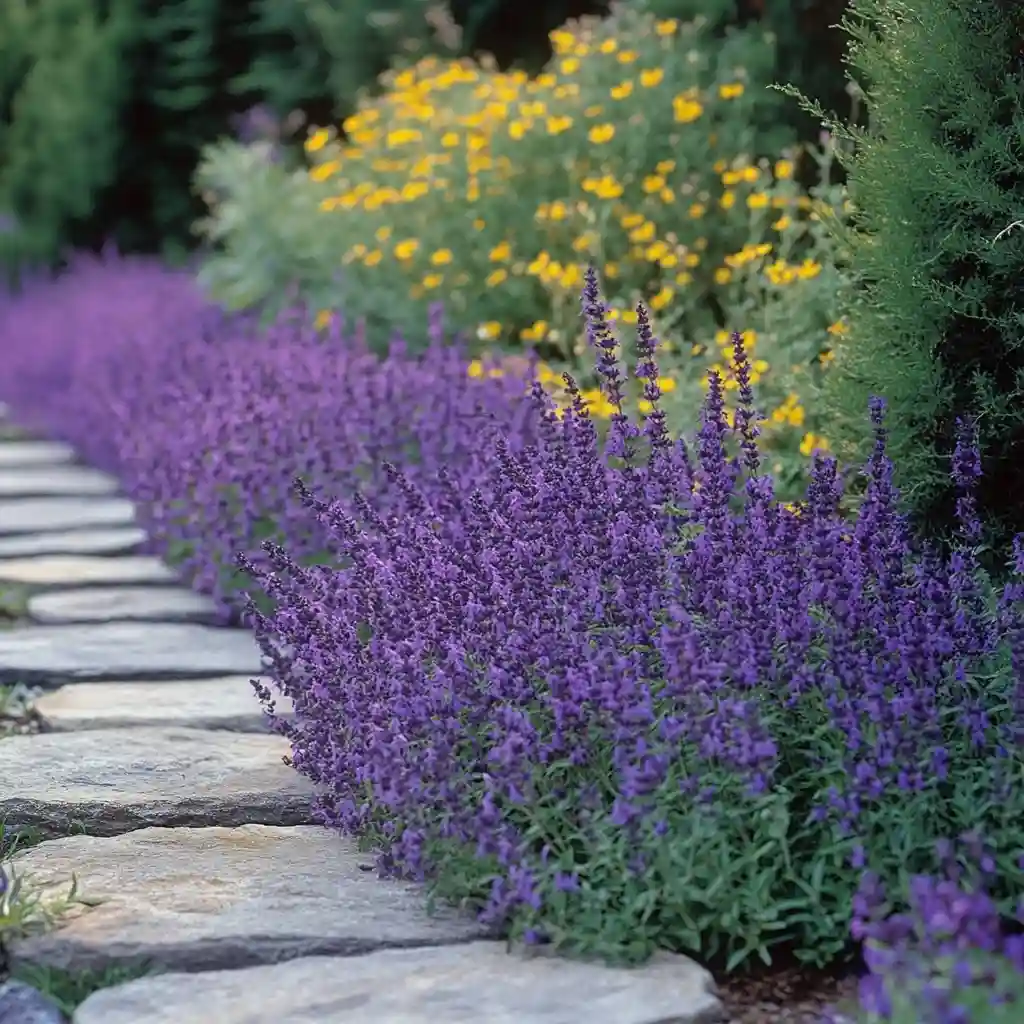Salvia landscaping ideas are a vibrant way to add color, fragrance, and structure to your garden. Ideal for low-maintenance and full-sun spaces, salvia is drought-tolerant, pollinator-friendly, and easy to grow—perfect for gardeners of all levels. In this guide, explore 14+ creative ways to use salvia, from cottage garden borders to bold container displays, and turn your yard into a blooming sanctuary.
Table of Contents
🌸 1. Colorful Ground Cover
If you’re looking to fill in gaps and create a vibrant garden floor, salvia landscaping ideas that involve low-growing varieties are a smart and stunning choice. These compact plants spread beautifully across borders and between stepping stones, forming a living carpet that bursts with rich purples, blues, and reds.
Why It Works
- Ground coverage: Salvia covers bare soil while suppressing weeds naturally.
- Pollinator-friendly: Bees and butterflies love low-growing salvia.
- Visual flow: It creates continuity between different garden sections.
Expert Tip
Plant salvia in full sun for the best bloom results, and group in clusters of 3–5 plants to maximize color impact.
Best for: Garden edges, in-between stepping stones, and under taller plants like roses or ornamental grasses.
🌿 2. Scented Delights
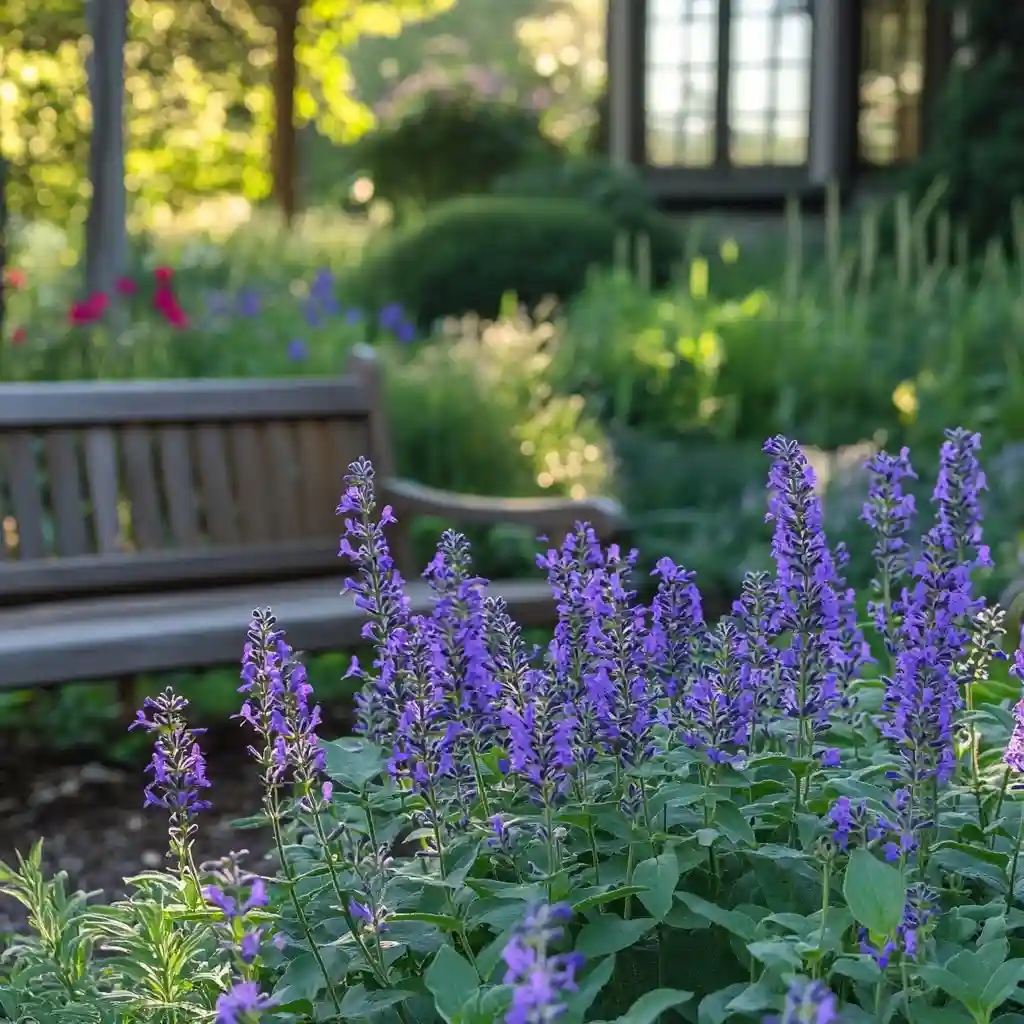
One of the more underrated salvia landscaping ideas is incorporating aromatic varieties for a fragrant garden experience. Certain salvias—like Salvia dorisiana or Salvia clevelandii—release a delightful scent, especially in the late afternoon heat, creating a sensory oasis in your landscape.
Why It Works
- Fragrance: Adds an olfactory layer to your garden design.
- Relaxation: Scented gardens promote calm and well-being.
- Evening enjoyment: Ideal for patios or sitting areas where scent is most noticeable.
Expert Tip
Plant aromatic salvias near windows, doorways, or outdoor seating areas where the breeze can carry their scent to you.
Best for: Scent gardens, sensory pathways, or warm-climate spaces that capture heat and enhance aroma.
🌺 3. Bold Border Planting

Looking to define your garden’s edges with striking color and form? One of the most effective salvia landscaping ideas is to use tall varieties as bold border plants. Their vertical structure and vivid blooms make them ideal for lining pathways, driveways, or property boundaries.
Why It Works
- Height and structure: Adds formality and order to garden beds.
- Extended bloom time: Many salvias flower for months, providing long-lasting color.
- Low maintenance: These perennials are easy to care for and thrive in full sun.
Expert Tip
Choose varieties like Salvia ‘Amistad’ or Salvia nemorosa for their upright habit and vibrant blooms. Space them evenly to create a dense, dramatic edge.
Best for: Front-of-border planting, driveway liners, and foundation gardens that need structure and punch.
🪴 4. Easy Maintenance Landscaping
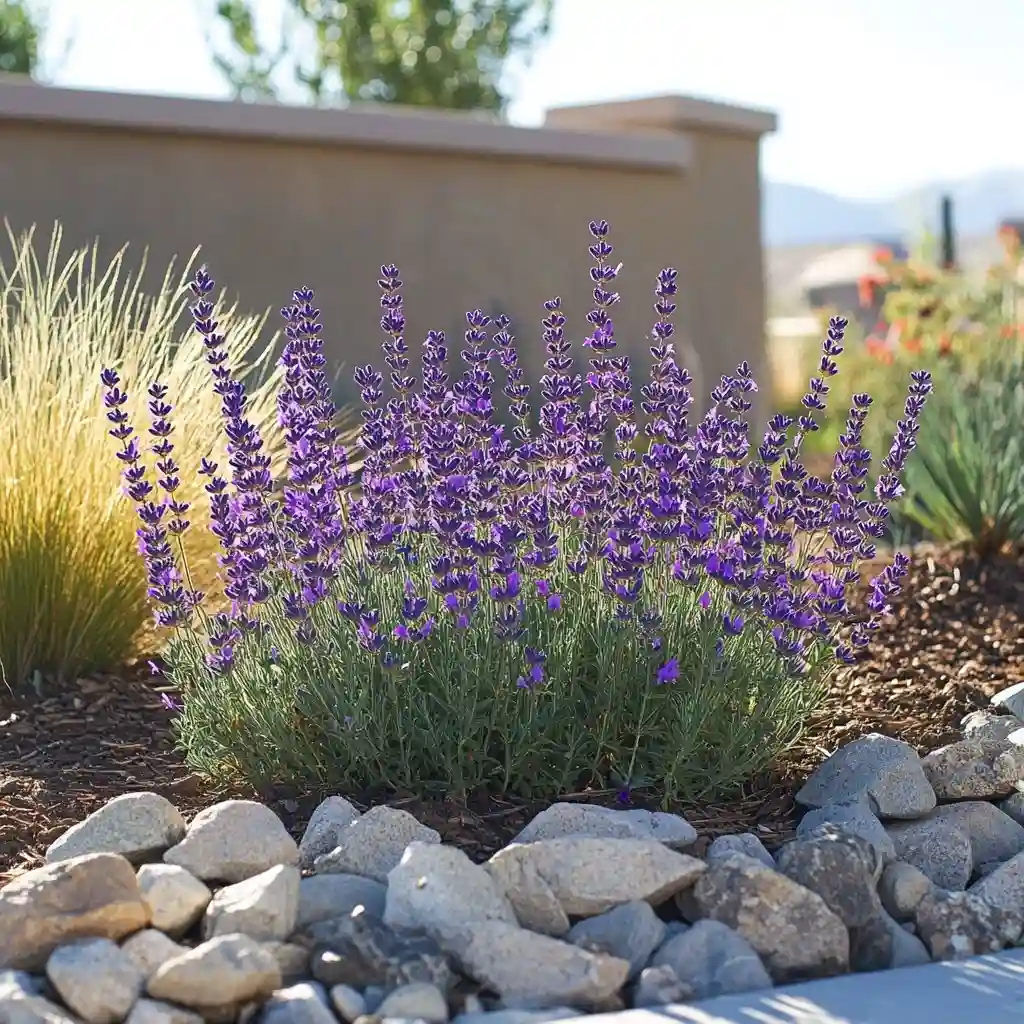
If you’re dreaming of a vibrant garden that doesn’t demand constant care, then easy-care salvia landscaping ideas are your best ally. Salvia is naturally drought-tolerant, pest-resistant, and incredibly forgiving—perfect for gardeners who want beauty without the burden.
Why It Works
- Drought resistance: Thrives with minimal watering.
- Fewer pests: Its fragrant foliage deters deer and many insects.
- Hardy performance: Suitable for hot, dry, or neglected spaces.
Expert Tip
Use mulch around the base of salvia to retain moisture and reduce weeds. Choose native or regionally adapted varieties for best results.
Best for: Busy homeowners, xeriscaping, and second homes where garden care is occasional.
🪨 5. Rock Garden Elegance
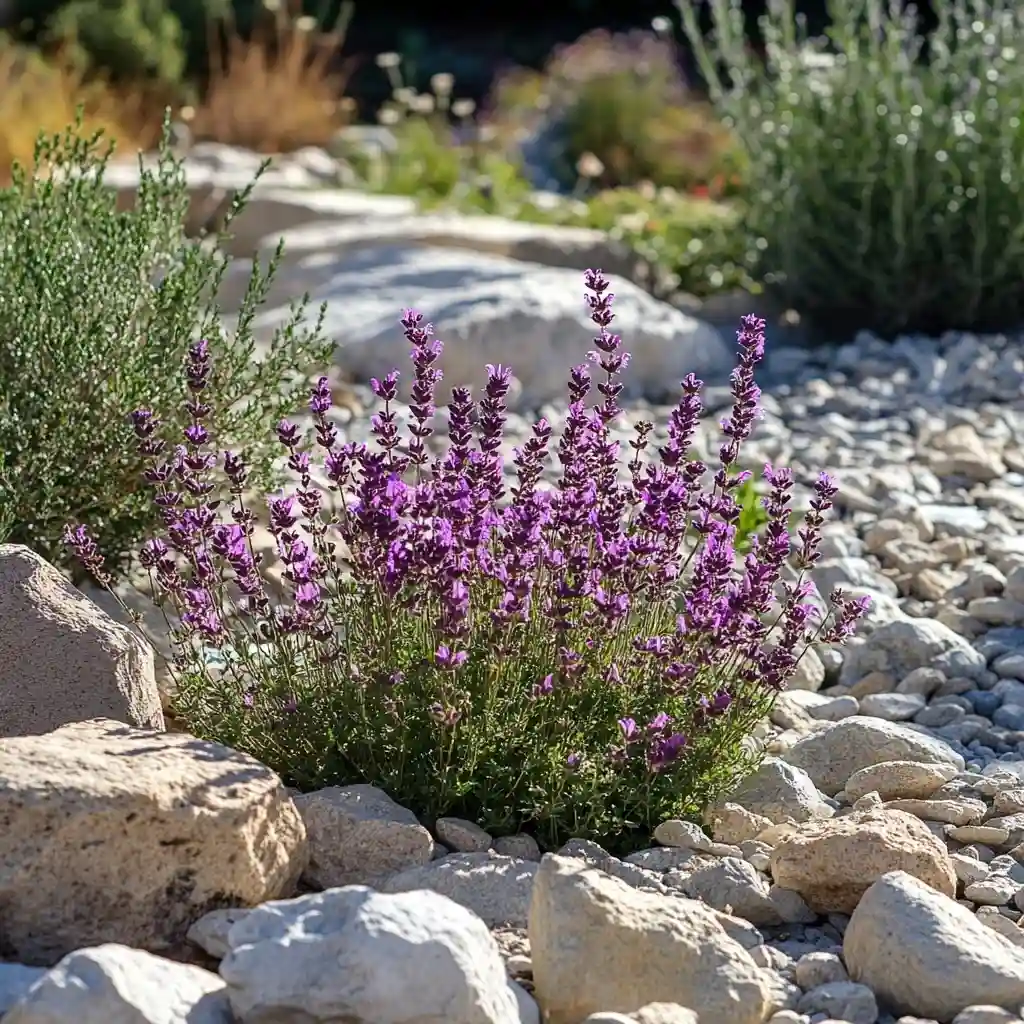
Among the most visually stunning salvia landscaping ideas is incorporating salvia into rock or gravel gardens. The contrast between the plant’s soft blooms and rugged stone creates a captivating, minimalist aesthetic that thrives on simplicity and low water use.
Why It Works
- Visual contrast: Bold flowers stand out against neutral-toned rocks.
- Excellent drainage: Rock gardens provide ideal conditions for salvia roots.
- Low maintenance: Gravel suppresses weeds and reduces the need for irrigation.
Expert Tip
Select compact, drought-tolerant varieties like Salvia greggii for these settings. Pair with succulents or ornamental grasses for extra texture.
Best for: Sloped yards, Mediterranean-inspired landscapes, or areas with poor soil where traditional gardens struggle.
🚶 6. Accent Pathways
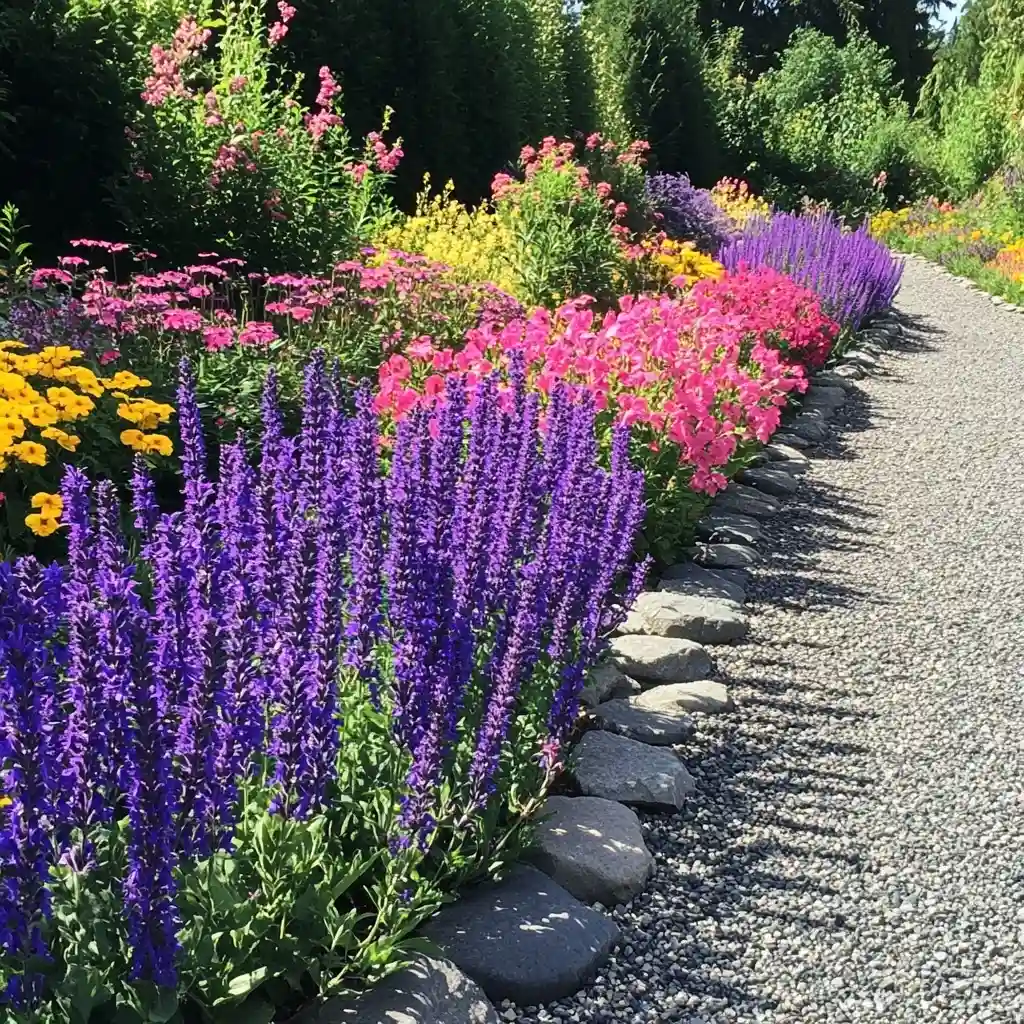
One of the most charming salvia landscaping ideas is using this colorful perennial to line walkways and paths. Salvia adds rhythm and softness to otherwise rigid hardscape, guiding the eye while adding movement and seasonal color to your garden strolls.
Why It Works
- Guides flow: Plants along paths naturally lead visitors through the space.
- Welcoming feel: Creates a sense of arrival and charm.
- Color pop: Blooms brighten up gravel, stone, or mulch paths.
Expert Tip
Space plants evenly and mix colors like deep violet, crimson, and sky blue for a dynamic effect. Avoid tall varieties that may overhang too much.
Best for: Garden walkways, front entry paths, and side-yard trails where color and flow are needed.
🏡 7. Cottage Garden Charm
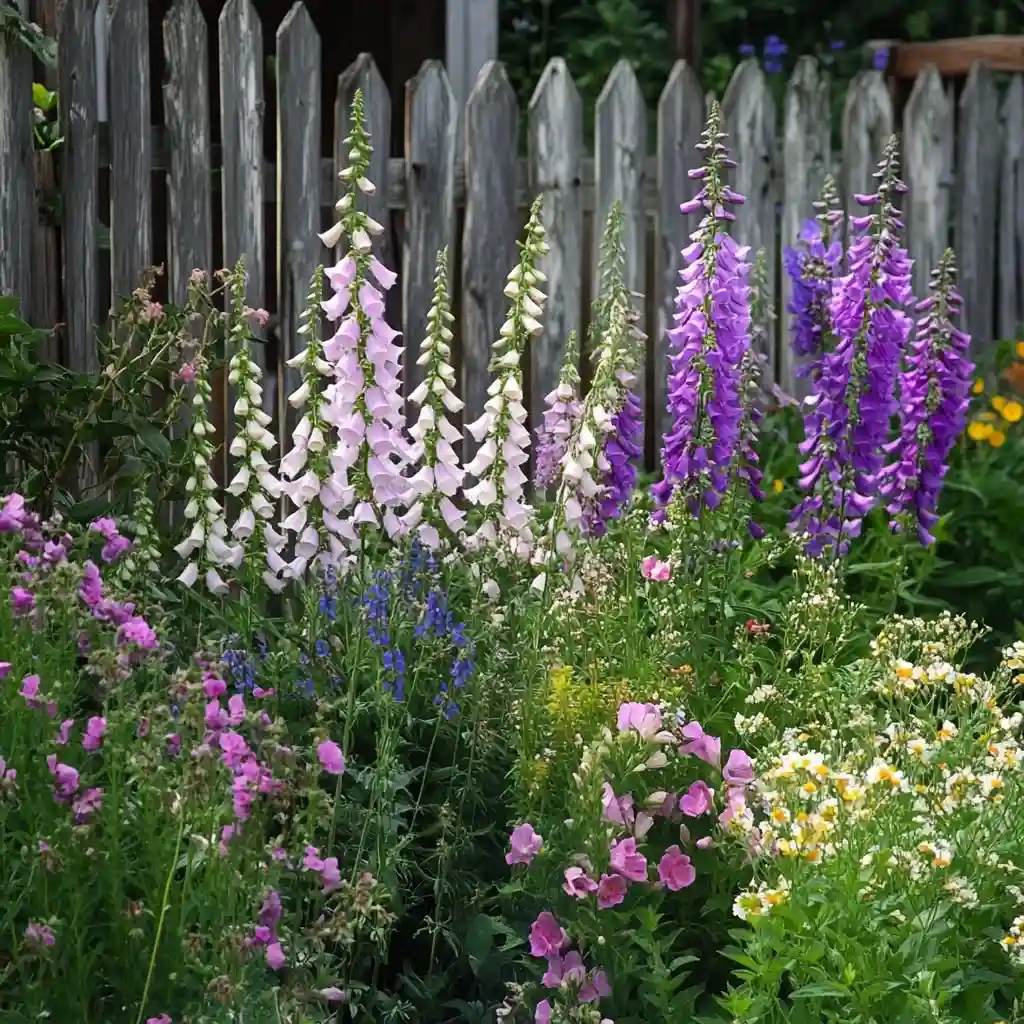
Few salvia landscaping ideas capture a whimsical, old-world vibe like mixing salvia into a cottage-style garden. With its abundant blooms and loose form, salvia blends effortlessly with other perennials, creating a colorful, textured, and inviting environment.
Why It Works
- Naturalistic look: Salvia softens edges and fills space between other plants.
- Continuous color: Varieties bloom at different times for long-lasting appeal.
- Pollinator magnet: Attracts bees, butterflies, and hummingbirds.
Expert Tip
Pair salvia with perennials like delphinium, yarrow, or foxglove for a layered, romantic look. Opt for pastel or jewel-toned varieties to match your palette.
Best for: Informal gardens, English-style beds, and backyard spaces where personality shines.
🌾 8. Unexpected Pairings
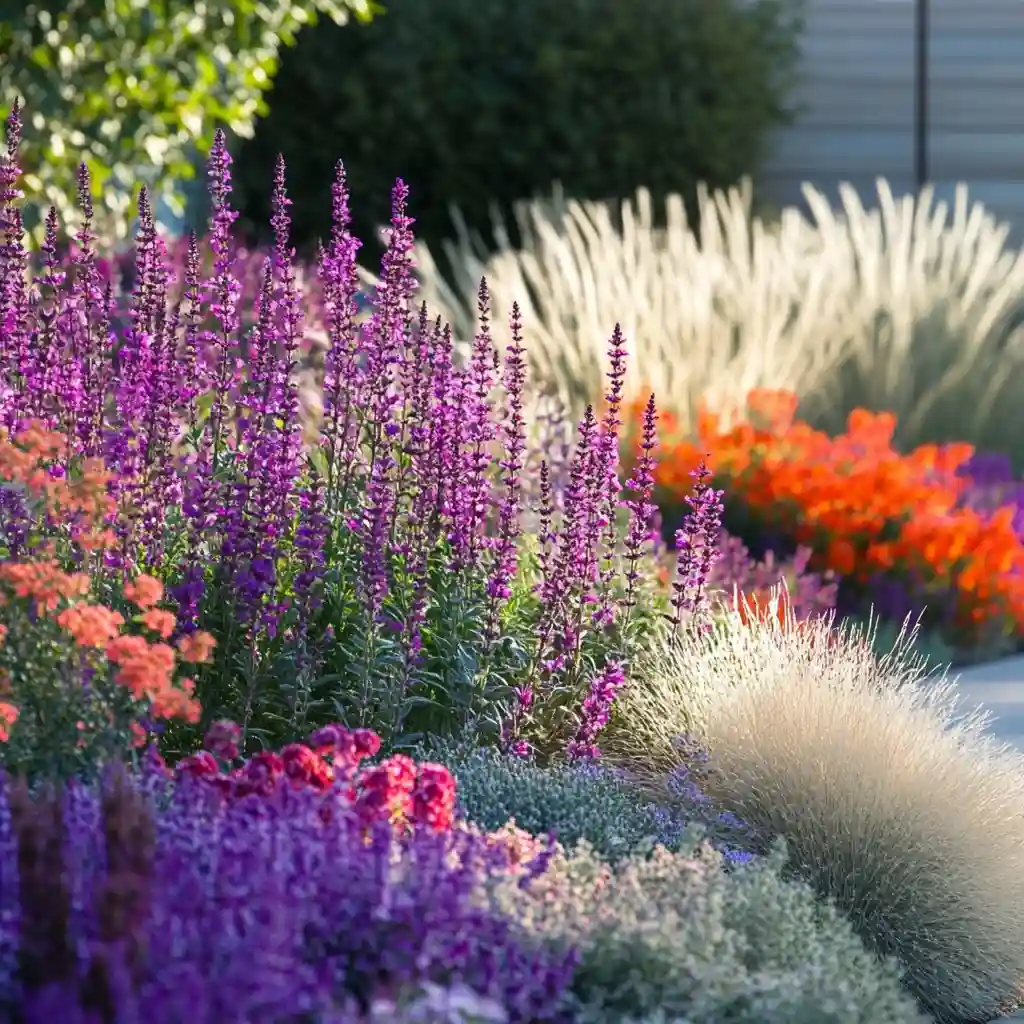
For a bold twist on traditional gardening, try salvia landscaping ideas that combine this colorful bloomer with unexpected companions like succulents or ornamental grasses. These textural mashups create dynamic contrasts that elevate any landscape design.
Why It Works
- Visual intrigue: Juxtaposes soft blooms with spiky or structural foliage.
- Modern appeal: Brings a contemporary edge to classic plantings.
- Climate synergy: Pairs well with other drought-tolerant species.
Expert Tip
Combine silver-toned succulents like echeveria with vibrant blue salvias, or mix airy grasses like Pennisetum with hot-pink Salvia greggii for layered depth.
Best for: Modern gardens, xeriscapes, or minimalist designs with a twist of surprise.
🎨 9. Contrast and Complement
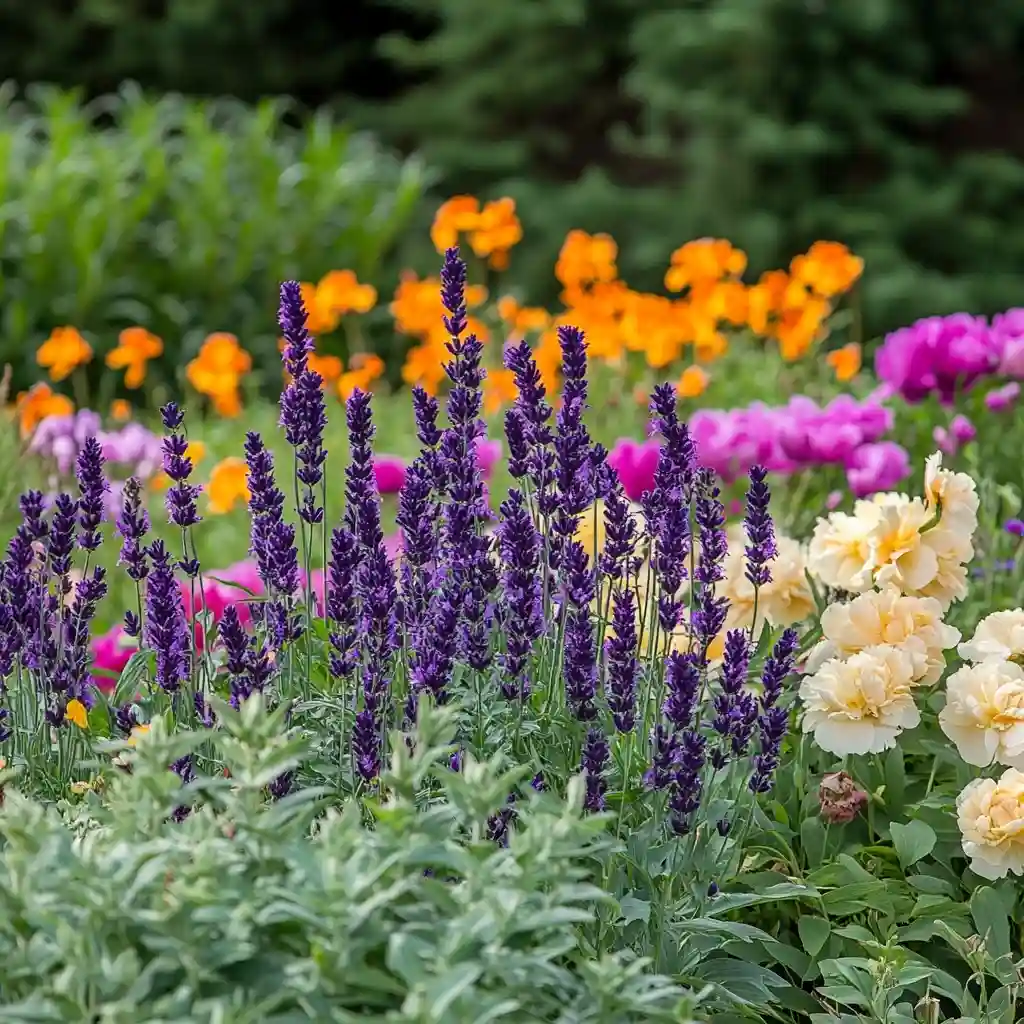
A tried-and-true favorite among salvia landscaping ideas is using salvia as a color contrast to highlight other garden stars. Whether you’re framing pale peonies or spotlighting golden daylilies, salvia’s saturated hues make everything around it pop.
Why It Works
- Color balance: Deep blues and purples intensify softer or warmer tones nearby.
- Focal point creation: Directs attention to specific garden areas or plant groupings.
- Design cohesion: Ties together a garden’s color palette naturally.
Expert Tip
Use salvia as a backdrop or “anchor plant” in mixed beds. Choose cooler-toned salvia for warm flower companions, or vice versa, to maximize visual impact.
Best for: Flower beds, centerpieces, or border edges that need stronger visual focus.
🕰 10. Seasonal Showstopper
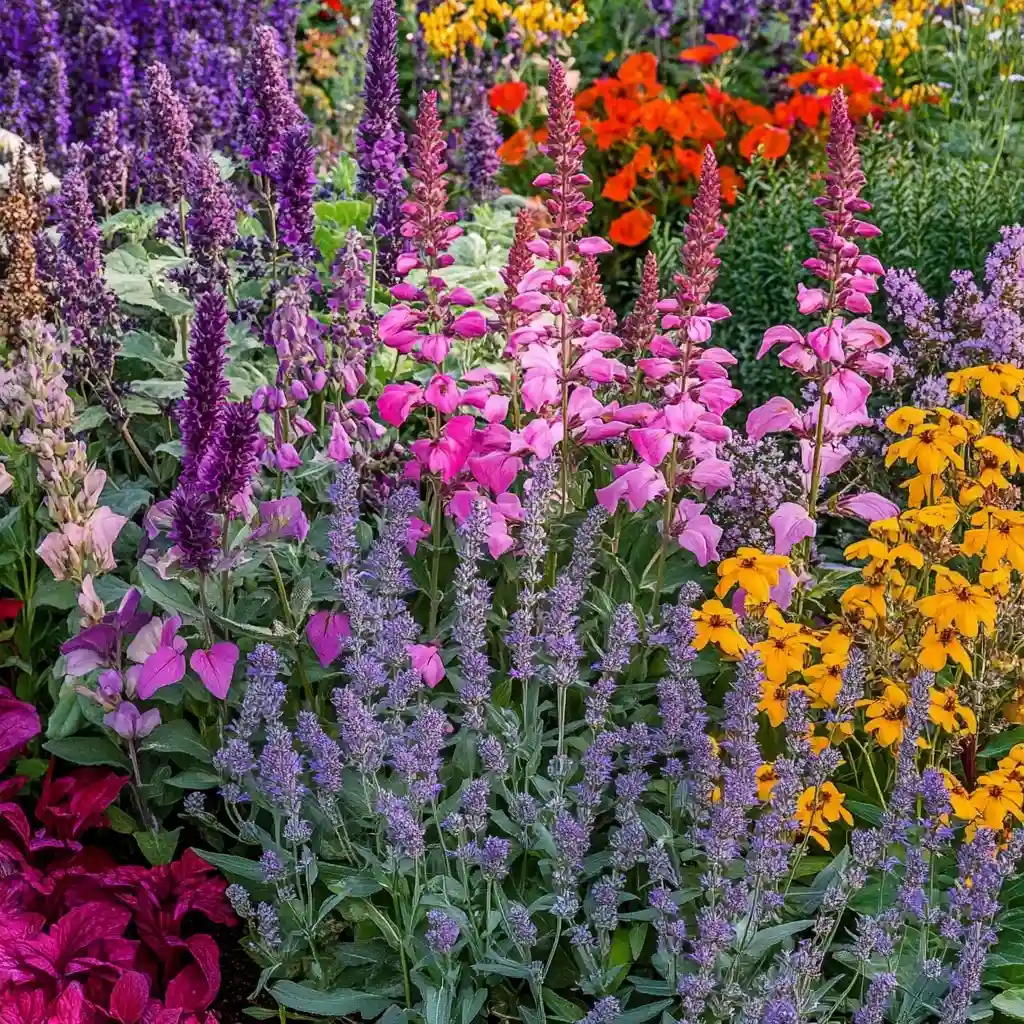
Among the smartest salvia landscaping ideas is planting different salvia varieties to ensure blooms across multiple seasons. With careful selection, you can enjoy waves of color from early spring through fall, keeping your garden lively year-round.
Why It Works
- Extended interest: Keeps your landscape vibrant from one season to the next.
- Diverse textures: Different types bring variety in form, height, and foliage.
- Wildlife value: Supports pollinators over an extended timeframe.
Expert Tip
Stagger bloom times by choosing varieties like Salvia nemorosa for spring, Salvia guaranitica for summer, and Salvia leucantha for fall. Pair with perennials that flower in opposite windows for maximum garden continuity.
Best for: Front yards, seasonal display beds, and any space where continuous color is key.
🏗 11. Vertical Interest

Adding height is a simple way to enhance garden structure, and few salvia landscaping ideas are as effective as using tall salvia varieties for vertical impact. These statuesque plants draw the eye upward and help layer your garden in a visually engaging way.
Why It Works
- Architectural value: Tall salvias provide a strong vertical element without looking stiff.
- Space maximization: Great for small gardens where every inch counts.
- Layered depth: Helps create a three-dimensional feel in plant beds.
Expert Tip
Use varieties like Salvia ‘Amistad’ or Salvia uliginosa, and plant them toward the back of garden beds. Use trellises or supports if needed for windy areas.
Best for: Layered garden designs, fence lines, or as backdrops in perennial beds.
🧱 12. Pathway Edging
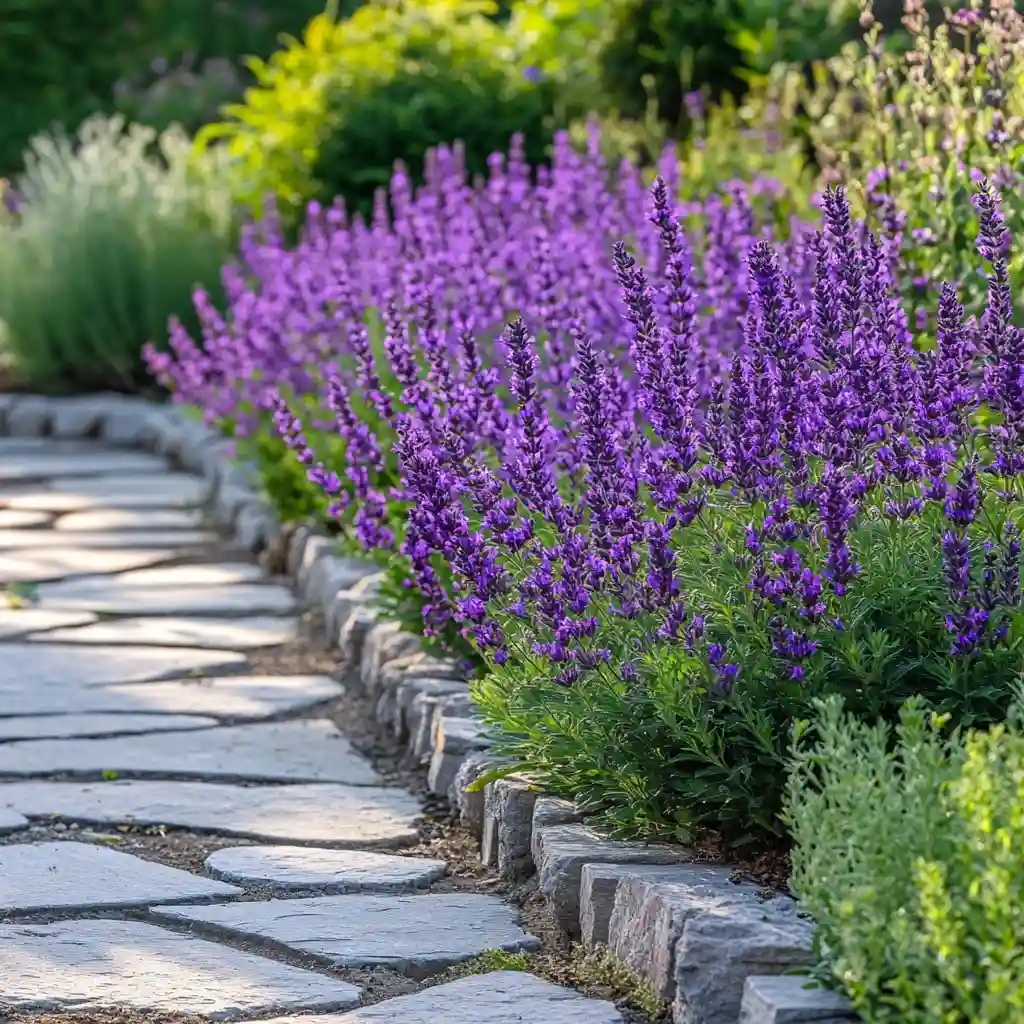
If you want clean lines and vibrant colors along your garden paths, one of the most practical salvia landscaping ideas is to use compact salvia varieties as edging plants. They bring structure without formality and offer seasonal blooms to frame every step you take.
Why It Works
- Symmetry and balance: Defines the walkway while softening hard edges.
- Low profile: Keeps sightlines open and tidy.
- Repeat bloom: Keeps the path lively through multiple seasons.
Expert Tip
Use dwarf varieties like Salvia ‘Sensation Compact’ and plant them in tight, uniform rows. For more definition, combine with stone or metal edging materials.
Best for: Garden paths, driveway borders, or patio edges that need a polished yet natural feel.
🌿 13. Container Gardens
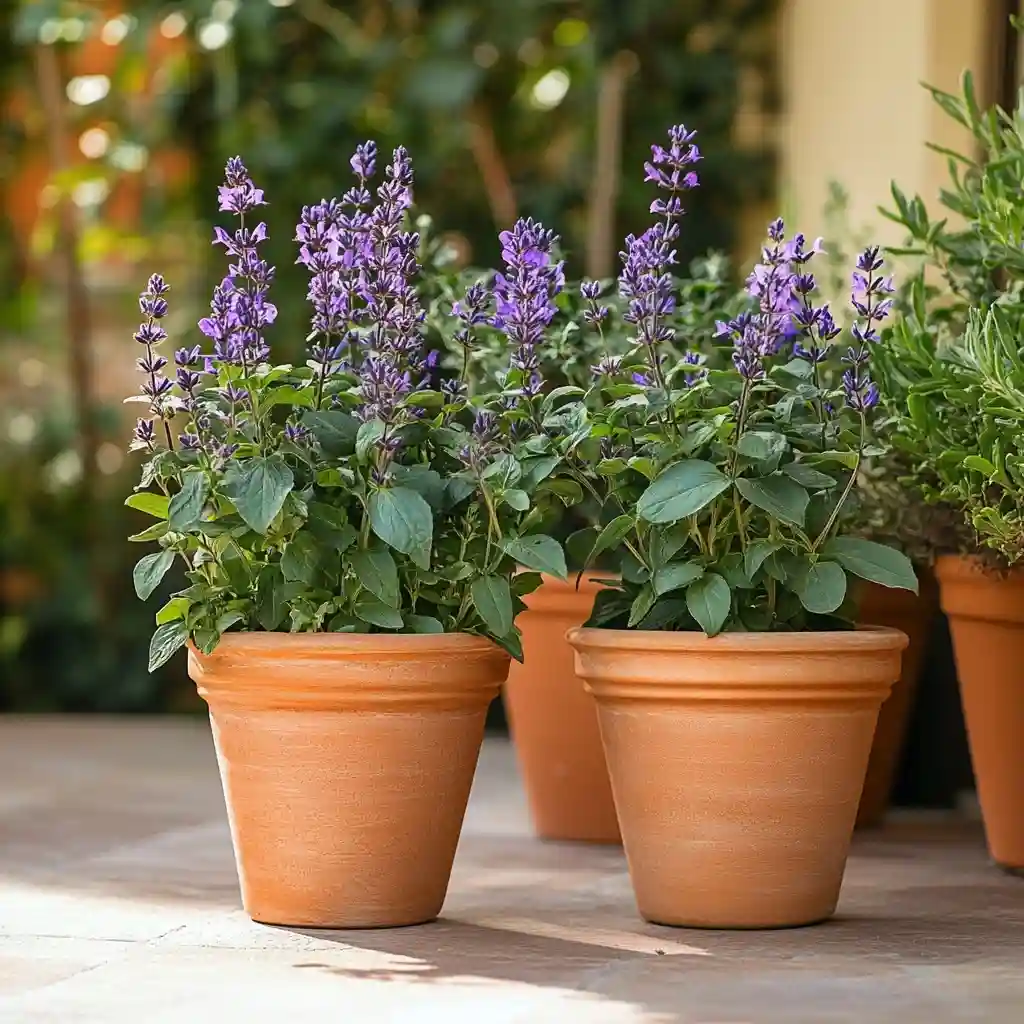
For flexible and portable design options, salvia landscaping ideas that involve container gardening are both stylish and practical. Salvias thrive in pots, allowing you to move color and fragrance wherever it’s needed—porches, patios, balconies, or entryways.
Why It Works
- Mobility: Move containers to spotlight blooms or follow the sun.
- Design control: Change color schemes with the seasons.
- Accessibility: Great for renters or those with limited ground space.
Expert Tip
Use well-draining soil and containers with drainage holes. Mix salvia with trailing plants like bacopa or sweet potato vine for cascading interest.
Best for: Patios, decks, apartment balconies, or accenting outdoor furniture areas.
💐 14. Mixed Flower Beds
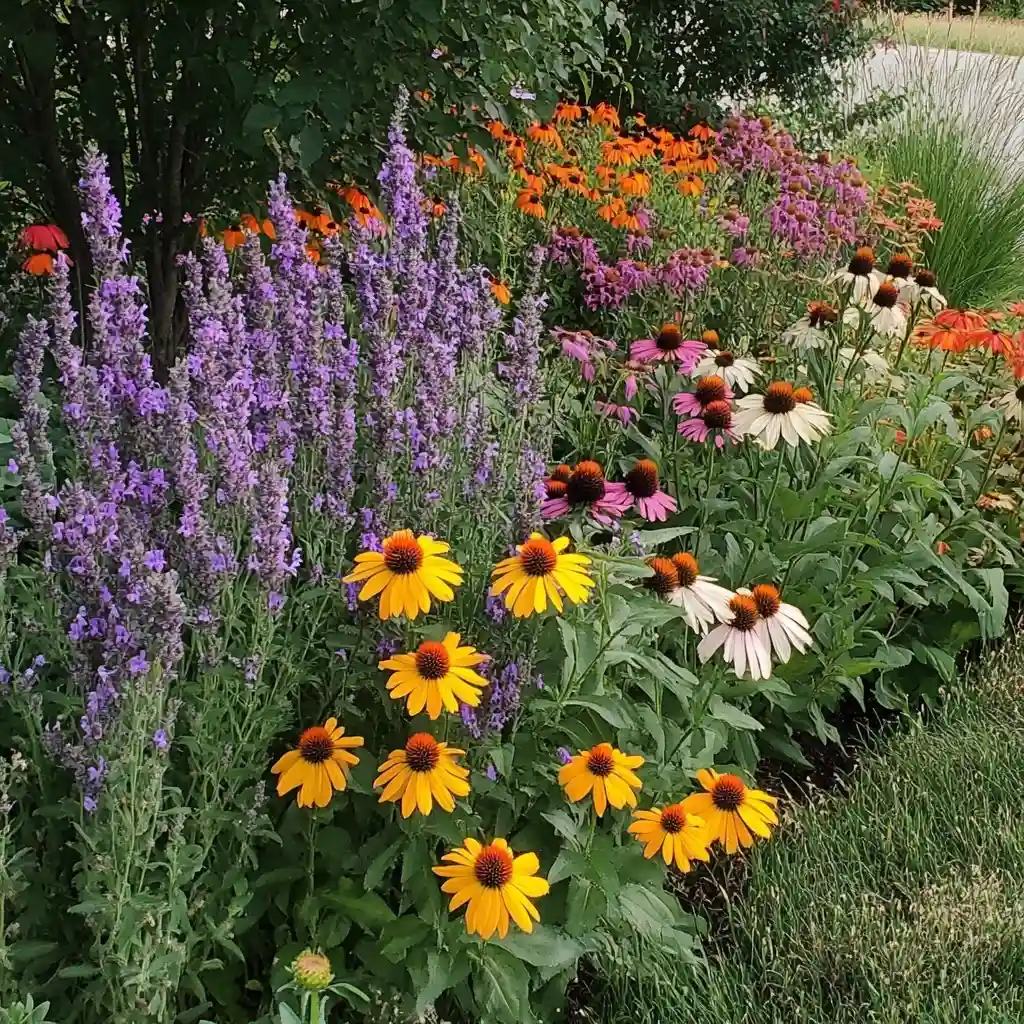
To create vibrant, long-lasting displays, one of the most colorful salvia landscaping ideas is to include salvia in mixed perennial beds. Their upright blooms contrast beautifully with softer flowers, adding rhythm, height, and color diversity.
Why It Works
- Visual harmony: Balances texture and color among various plant types.
- Long bloom time: Keeps flower beds bright throughout the growing season.
- Pollinator appeal: Attracts beneficial insects that help the whole garden thrive.
Expert Tip
Combine salvias with daisies, coneflowers, rudbeckia, and coreopsis for a dynamic and hardy flower bed. Vary heights and bloom periods for non-stop visual interest.
Best for: Front-yard flower beds, wildlife gardens, or cheerful cottage-style landscapes.
🌟 Conclusion
Whether you’re after year-round color, a fragrant path, or a pollinator-friendly retreat, salvia offers endless landscaping possibilities. Its adaptability makes it perfect for containers, borders, rock gardens, and more. From easy-care solutions to bold design features, salvia brings texture, energy, and vibrant blooms to any outdoor space. Mix it with companion perennials and watch your garden come to life.
❓ FAQ: Salvia Landscaping Ideas
1. What are the best salvia varieties for landscaping?
Some of the top salvia varieties for landscaping include Salvia nemorosa, Salvia greggii, Salvia guaranitica, and Salvia leucantha. These offer a mix of height, color, and bloom time, perfect for borders, beds, and containers.
2. Is salvia good for low-maintenance gardens?
Absolutely. Salvia is drought-tolerant, pest-resistant, and requires minimal care once established, making it ideal for low-maintenance and xeriscaped gardens.
3. Can I plant salvia in pots or containers?
Yes! Salvia grows beautifully in containers. Just ensure good drainage, use high-quality potting mix, and place them in full sun for optimal blooming.
4. When should I plant salvia?
Plant salvia in spring after the last frost or in early fall in warmer climates. This gives the roots time to establish before extreme weather.
5. How do I keep salvia blooming longer?
Deadhead spent blooms regularly and provide consistent sunlight and moderate water. Using a balanced, slow-release fertilizer can also encourage repeat flowering.
6. Does salvia attract pollinators?
Yes! Salvia is a favorite among bees, butterflies, and hummingbirds. It’s one of the best pollinator plants for eco-friendly landscaping.
7. Can salvia survive the winter?
Many perennial salvias are hardy and can survive winter in USDA zones 4–9. Cut back the stems in late fall and mulch the base for added protection.
8. What plants go well with salvia in landscaping?
Salvia pairs well with daylilies, coneflowers, ornamental grasses, lavender, succulents, and yarrow. These combinations offer contrast in color, texture, and height.
🌿 Love gardening inspiration? Follow me on Pinterest for bold plant ideas, tips, and seasonal color!
More Posts
